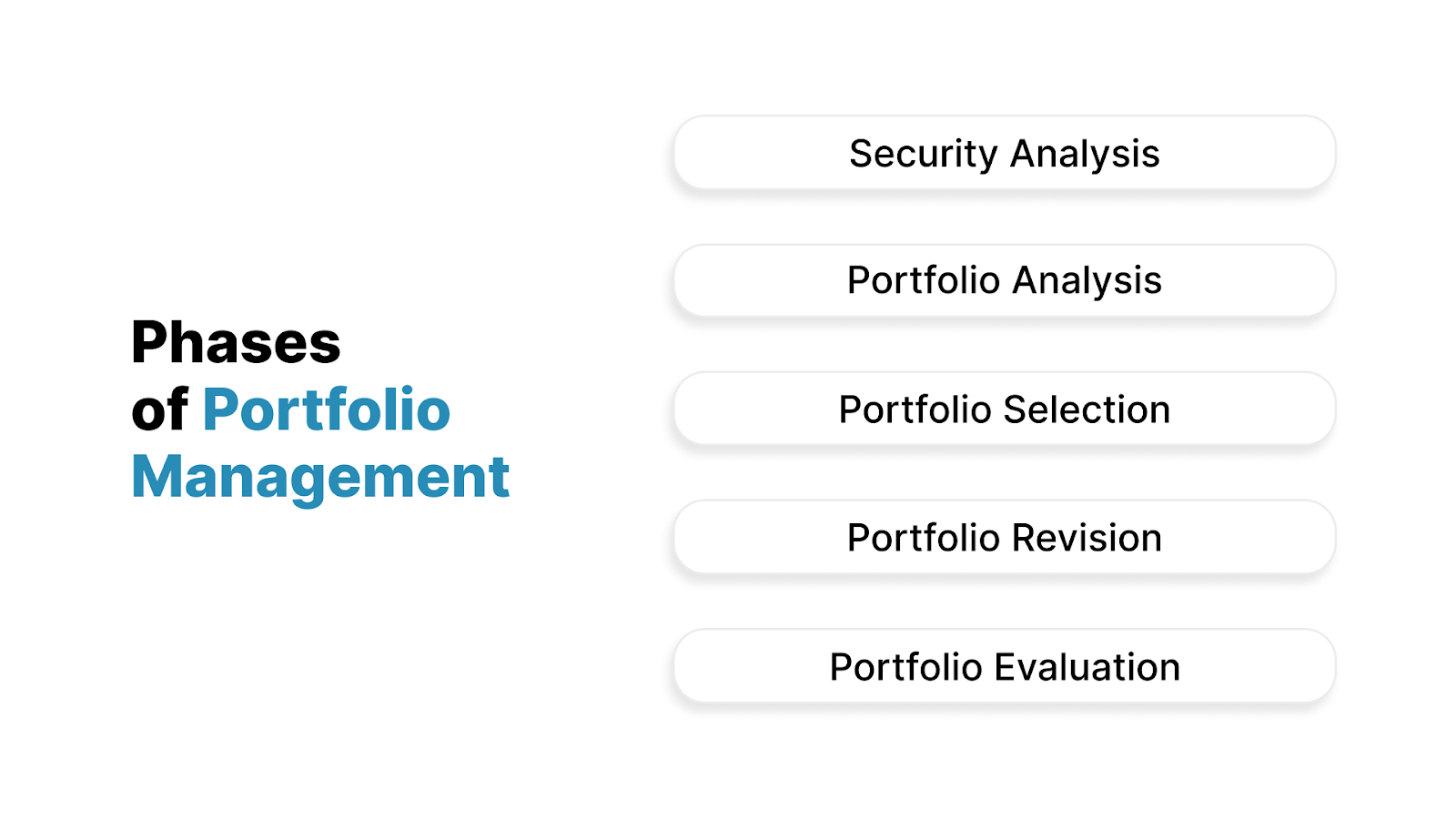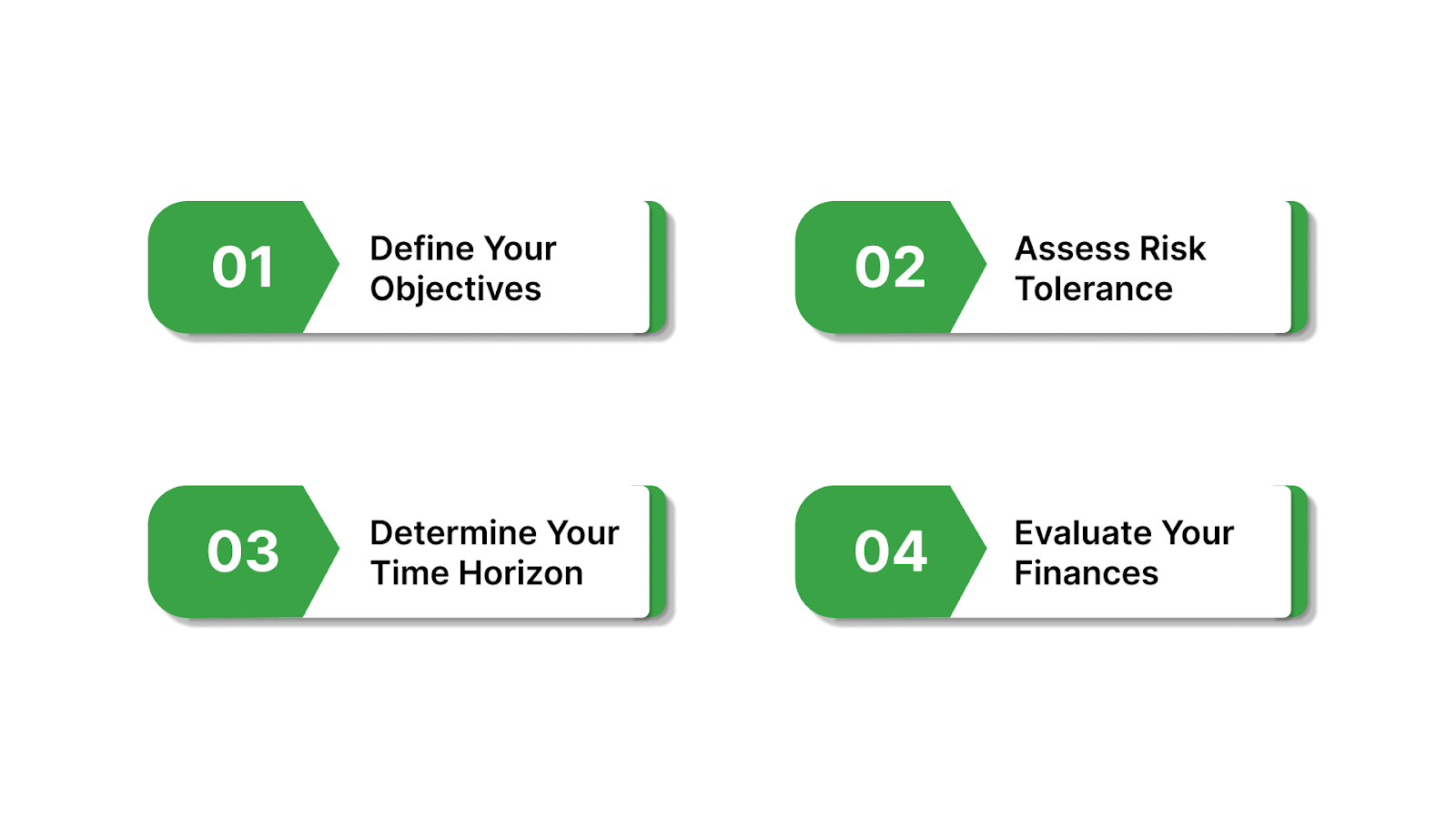Understanding the Phases of the Portfolio Management Process
Understanding the Phases of the Portfolio Management Process

Transform Your Financial Future
Contact UsInvesting can feel overwhelming, but a clear process can turn uncertainty into opportunity. In 2023, for the first time, investments in U.S. passive funds surpassed those in active funds, totaling $13.3 trillion. This shift highlights the growing preference for systematic, process-driven investment strategies. At Forest Hill Management, we believe you deserve a roadmap to navigate the complexities of investing.
This blog dives deep into the portfolio management process, breaking it down into manageable steps and showing you how each phase contributes to your success. Let’s start by exploring what portfolio management really means for you.
Key Takeaways
- Portfolio management is a structured approach to aligning your investments with specific goals and risk tolerance, using planning, research, and adjustments over time.
- The portfolio management process includes five essential phases: security analysis, portfolio analysis, portfolio selection, portfolio revision, and portfolio evaluation.
- Strategic planning lays the foundation, helping investors define objectives, assess risk, set timelines, and choose the right asset allocation and investment strategy.
- Estimation tools like historical performance analysis, scenario modeling, and Monte Carlo simulations help predict potential outcomes and guide better investment decisions.
- Implementation and monitoring ensure your portfolio stays aligned with your strategy, requiring ongoing attention, rebalancing, and adaptation to life and market changes.
What is Portfolio Management
Portfolio management is about making smart choices with your investments to achieve your financial dreams while keeping risks in check. Imagine it as curating a collection where every piece, from stocks to bonds, serves a purpose tailored to your needs. You might want to build wealth for the future, create a steady income stream, or safeguard what you’ve already earned. Portfolio management gives you a framework to weigh risks against rewards and adjust as life evolves.
This isn’t a one-time task; it’s an ongoing effort that adapts to market trends and your personal circumstances. Whether you’re new to investing or refining your approach, grasping this concept helps you take control of your financial future.
Now that you understand portfolio management, let’s walk through the phases that bring it to life.
Also Read: Essential Habits and Strategies for Achieving Family Financial Freedom
Phases of Portfolio Management Process

The portfolio management process consists of five key phases designed to refine your investment strategy. You’ll cycle through these steps to build and maintain a portfolio that reflects your goals. Here’s a detailed look at how each phase works for you.
Security Analysis
Security analysis kicks things off by helping you evaluate individual investments. Picture yourself researching potential additions to your portfolio, much like scouting talent for a winning team. You’ll dig into stocks, bonds, or other assets using tools like fundamental analysis, which looks at a company’s financial statements, or technical analysis, which tracks price trends. For instance, you might study a retailer’s revenue growth or a bond’s yield to decide if it fits your plan. This phase ensures you choose securities with strong potential to support your objectives.
Portfolio Analysis
After pinpointing solid securities, portfolio analysis shows you how they interact as a group. It’s similar to assessing how your team performs together on the field. You’ll explore how assets correlate, meaning whether they rise or fall in unison, and how their collective behavior impacts your risk. For example, combining a high-growth tech stock with a steady dividend payer can balance your portfolio’s ups and downs. This phase uses concepts like diversification to optimize your mix, setting the stage for smart selections.
Portfolio Selection
Portfolio selection is where you make your choices and set your lineup. With insights from your analyses, you’ll pick the securities and decide their proportions based on your risk comfort and goals. If you aim for growth, you might lean toward 65% stocks and 35% bonds; if stability is your priority, perhaps 50% bonds and 50% stocks. This step turns your research into a concrete portfolio, customized to fit your financial vision.
Portfolio Revision
Markets shift, and so must your portfolio. Portfolio revision involves regularly reviewing and tweaking your holdings to stay aligned with your strategy. Think of it as adjusting your game plan mid-season. If a stock isn’t performing or your bonds now dominate after a market dip, you’ll sell or buy to rebalance. For example, if your target is 60% stocks and they’ve climbed to 75%, you’d adjust back to maintain your risk level. This phase keeps your investments responsive to change.
Portfolio Evaluation
Portfolio evaluation wraps up the process by measuring how well your portfolio performs. It’s your chance to step back and review the results, like analyzing a season’s outcomes. You’ll compare returns to benchmarks like the S&P 500 and check if you’re meeting your targets. You might rethink your mix if your portfolio earns 8% while the benchmark hits 10%. This step provides clarity, helping you refine your approach for the next cycle.
These phases work together, forming a continuous loop that strengthens your portfolio over time. With this process in mind, let’s focus on the planning and strategy that drive it forward.
Also Read: Accelerate Your Lending: Strategic Steps to Boost Loan Portfolio Growth
Planning and Strategy in Portfolio Management
Effective portfolio management starts with careful planning and a tailored strategy. This foundational phase ensures your investments reflect your financial objectives, risk tolerance, and timeline. It’s about setting yourself up for success by making deliberate, informed choices.
Key Planning Steps
Your planning process lays the groundwork for everything that follows. Consider these essential steps:

- Define Your Objectives: Are you saving for retirement, a home, or another milestone? Clear goals guide your decisions.
- Assess Risk Tolerance: How much market fluctuation can you handle? This shapes the aggressiveness of your portfolio.
- Determine Your Time Horizon: When will you need the funds? Longer timelines allow for more growth-focused investments.
- Evaluate Your Finances: Factor in your income, expenses, and current assets to determine what you can invest.
Strategic Considerations
Once your plan is set, your strategy outlines how to achieve it. Think about these key elements:
- Asset Allocation: How will you split your money between stocks, bonds, and other assets? A balanced mix reduces risk while pursuing growth.
- Diversification: Spread your investments across industries and regions to protect against losses in any one area.
- Active vs. Passive Management: Will you actively pick investments or opt for passive funds that track the market? Each has its trade-offs in cost and effort.
- Tax Efficiency: Structure your portfolio to minimize taxes by using tax-advantaged accounts or holding investments long-term.
For instance, if you’re a younger investor, you might lean toward 80% stocks for growth, diversified across sectors, while someone closer to retirement might prioritize bonds for stability. A well-crafted strategy keeps your portfolio on track and adaptable to your needs and market changes.
Finally, let’s take a look at how estimation and implementation play a key role in portfolio management.
Estimation and Implementation
Once you’ve developed a clear plan and strategy, the next step in portfolio management is estimation and implementation. In this phase, your ideas take shape, moving from abstract goals to a tangible portfolio. You’ll estimate how your investments might perform, assess potential risks, and execute the decisions that bring your strategy to life.
Estimating Portfolio Performance and Risks
Before committing your money, you must understand what you might expect from your portfolio. Estimation isn’t about pinpoint accuracy—it’s about making educated projections based on solid data. Here are some practical techniques you can use:
- Historical Performance Analysis: Review how similar portfolios have performed over time. For example, historically, a mix of 60% stocks and 40% bonds might have averaged 7% annual returns, giving you a baseline.
- Scenario Modeling: Test your portfolio against different market conditions. How would it hold up in a downturn or a period of rising rates? This helps you gauge its resilience.
- Monte Carlo Simulations: Use this statistical tool to run thousands of potential outcomes and estimate the likelihood of achieving your target returns.
These methods give you a clearer picture of potential rewards and risks, allowing you to refine your approach before taking action.
Implementing Your Strategy
With your estimates ready, it’s time to implement your plan. Implementation involves several key steps:

- Selecting Investments: Choose specific assets—like individual stocks, ETFs, or bonds—that align with your asset allocation.
- Choosing Investment Vehicles: Decide whether mutual funds, ETFs, or direct investments best fit your needs. ETFs, for instance, offer low costs and flexibility.
- Executing Trades: Buy and sell securities through your brokerage, keeping an eye on timing and costs.
- Monitoring and Rebalancing: Regularly check your portfolio’s performance and adjust it to maintain your desired allocation.
For example, if your strategy calls for 50% in stocks, you might select a mix of index funds and individual equities, then rebalance annually to keep that ratio intact. This ongoing process ensures your portfolio stays aligned with your goals.
Conclusion
Navigating the phases of portfolio management equips you to take charge of your financial journey. You’ve learned what portfolio management is, explored its five phases—security analysis, portfolio analysis, selection, revision, and evaluation—and seen how planning and strategy unify the process. This structured approach lets you balance risk and reward, adapt to change, and confidently pursue your goals.
At Forest Hill Management, we’re committed to supporting you every step of the way. Ready to elevate your investments? Reach out today, and let’s build a portfolio that works for you.
Frequently Asked Questions
1. What are the five phases of the portfolio management process?
The five phases are security analysis, portfolio analysis, portfolio selection, portfolio revision, and portfolio evaluation. Together, they help build and manage a well-balanced investment portfolio.
2. Why is portfolio revision important?
Revision ensures your portfolio stays aligned with your target allocation and risk profile. It involves rebalancing assets when market movements shift your original mix.
3. How does diversification reduce investment risk?
Diversification spreads your investments across various asset classes and sectors. This reduces the impact of poor performance in any single investment on your overall portfolio.
4. What is the role of planning in portfolio management?
Planning sets the stage for the entire portfolio process. It helps define your financial goals, time horizon, and risk tolerance, guiding your investment decisions from the start.
5. How often should a portfolio be evaluated or reviewed?
Most investors review their portfolios quarterly or annually. However, major life events or market shifts may require more frequent reviews to keep the strategy on track.
-p-500%20(1).png)